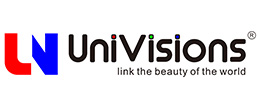The Guangdong Academy of Sciences team has developed a quantum dot patterning technology that can be used for full-color display of Micro LED.
In recent years, with the rapid development of communicationIn recent years, with the rapid development of communication technology and people‘s pursuit of display color and practicality, display technology has shown diversified development. Quantum dots, as a photovoltaic material with huge advantages in color purity, brightness, color gamut, quantum efficiency and other aspects, have attracted wide attention. When using the light conversion layer prepared based on quantum dots combined with efficient blue light active light-emitting devices to achieve full-color display, it will be very helpful to solve the challenges faced by new display technologies such as OLED and Micro LED.
In the above light conversion application, red and green quantum dots must be correspondingly aligned with the corresponding blue pixels in order to achieve full-color display. Therefore, appropriate micro/nano processing technology is needed for the pixel integration of quantum dots. However, existing quantum dot patterning techniques still pose certain challenges in preparing high-thickness and high-resolution quantum dot light conversion films. Therefore, a team of researchers from the Institute of New Display Technology at the Academy of Sciences in Guangdong Province has conducted a series of innovative research on developing universal quantum dot patterning technology.
Recently, researchers from the Institute of Semiconductors at the Academy of Sciences in Guangdong Province developed a simple and compatible patterning method to prepare quantum dot light conversion films with a thickness of more than 10 μm. This method combines the advantages of replication molding, plasma etching, and transfer printing, and is referred to as the RM-PE-TP patterning technology. The specific process flow is shown in Figure 1. The quantum dot polymer material used in this technology is easy to prepare and avoids the complex surface modification and material composition issues that are necessary in other patterning methods.
In addition, the replication molding process is very beneficial for obtaining quantum dot films with a thickness of more than 10 μm, and the resolution and thickness of the quantum dot array are easy to adjust. Overall, the entire patterning method basically does not damage the optical performance of the quantum dot material, facilitates multi-color quantum dot pattern integration, and can even further improve the resolution of the quantum dot pattern through single-color integration.
Therefore, based on the above RM-PE-TP patterning technology, the research team finally prepared patterned quantum dot polymer films with a maximum resolution of 669 ppi and a maximum film thickness of 19.74 μm, and obtained large-area high-resolution quantum dot thick films on flexible substrates. This demonstrates that this technology has great potential for large-scale flexible quantum dot pattern integration.
In addition, the team initially verified the feasibility of simply integrating the above quantum dot polymer film as a light conversion layer into a blue light Micro LED device to achieve light conversion applications, and found that increasing the thickness of the quantum dot film can improve the efficiency of light conversion. Relevant research results were published in the journal Nanoscale under the title "Wafer-scale patterning of high-resolution quantum dot films with a thickness over 10 μm for improved color conversion".
.png)
.png)

